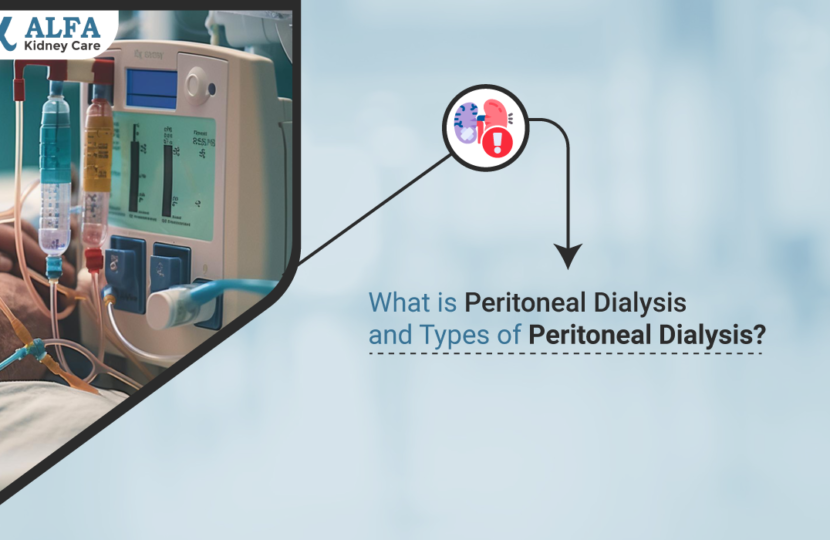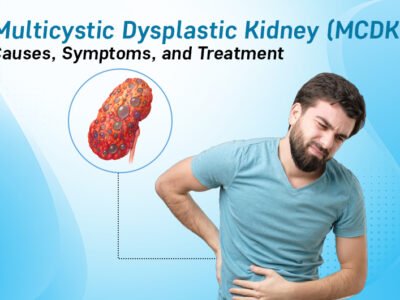What if there is a way for people to manage life-threatening conditions at home? To many patients with kidney failure, this is a reality because of peritoneal dialysis. It may seem confusing, but the process can become as easy and normal for those who require it as for those who do not. Now let’s get into peritoneal dialysis, the principle of operation and the types of peritoneal dialysis.
What is Peritoneal Dialysis?
PD is the recommended method of treatment for patients presenting with Chronic Kidney Disease(CKD) who cannot be treated using otherwise methods. It is the peritoneum which is the membrane that lines the abdominal portion of your body and functions as the filter in your blood that extracts waste elements from it. Here with respect to this procedure hemodialysis no longer entails purifying your blood with the help of an external remedy or machine.
This is mainly not different from peritoneal dialysis in terms of the fact that it allows the process to happen within the body system itself. This method is less intrusive and provides increased control per patient than the alternative.
How Does Peritoneal Dialysis Work?
Any layer of tissue is itself a natural filter since it is a barrier between the rest of the body and the environment. This is achieved via a tube known as a catheter that is placed via the abdomen in peritoneal dialysis. This catheter is installed inside the body of an affected individual and is used for filling the abdominal cavity of an individual using a dialysis solution that helps remove excess waste and fluid in the blood.
Here’s a simplified step-by-step of the process:
- Catheter Insertion: It is transposed through a small incision.
- Dialysis Solution: Another concoction known as dialysis solution that is free of any form of microscopic living organism is passed through the catheter for peritoneal dialysis into the abdomen.
- Diffusion and Osmosis: Dialysis fluids are then pumped through a short tube and into the abdomen of the patient and back to the dialyzer again to the dialysis bags where waste products and excess fluids pass out from the peritoneum to the dialysis fluids.
- Drainage: After a few hours the wastes and excess fluids are withdrawn through one of the sets and a new solution is connected through the other valve of the catheter where it would be replenished again every few hours.
Types of Peritoneal Dialysis
There are 2 types of peritoneal dialysis; any of these methods are suitable for a particular lifestyle or conditions overall. The two of them can be classified: as CAPD & APD.
1. Continuous Ambulatory Peritoneal Dialysis (CAPD)
CAPD is the most common type and doesn’t require a machine. It involves the patient performing the dialysis exchanges manually, usually four times a day. Each exchange takes about 30-40 minutes.
Advantages of CAPD:
CAPD as a group is the most common one that does not need a machine. The patient does the dialysis with the use of a machine to reverse the cycles four times a day. On average, the exchange process takes between 30 and 40 minutes.
- Helps to promote flexibility to allow performers to conduct exchanges at home or work.
- Eliminates the necessity for a machine, making production faster and more cost-effective.
- Comfort and ease with just the bare essentials.
Disadvantages of CAPD:
- Requires several hours per day, all in all, which is frustrating.
- Greater chances of infection because of constant touching and manipulation of the catheter.
2. Automated Peritoneal Dialysis (APD)
APD involves the use of a machine called a cycler which is programmed to do the exchange of dialysis during a sleep period. The machine makes it 8-10 hours overnight which automates the process.
Advantages of APD:
- So easy as it operates throughout the night and the rest of the day is free.
- Less chance of penetration by a new infection since fewer material handovers are carried out.
- Well suited for ladies and gents leading their active lives.
Disadvantages of APD:
- Needs a machine and is thus a little bit on the high side.
- It may also be stopped due to power failure or failure to run a given machine.
- This might be uncomfortable for some people as they may need to sleep as they keep their bodies connected to the machine.
Choosing the Right Types of Peritoneal Dialysis
CAPD and APD both have certain advantages and disadvantages; therefore, people need to select this method depending on lifestyle, health condition, and personal preferences. Here are some considerations:
- Lifestyle Needs: CAPD may be ideal for someone who wants to be mobile during daytime hours while APD is right for a patient who wishes to undergo dialysis during sleep.
- Medical Condition: There are patients who fall into certain categories that best fit in a specific type of dialysis.
- Support System: Support from family, friends, or a spouse helps to cope with any of the dialysis mentioned above.
Living with Peritoneal Dialysis
Peritoneal dialysis is a form of dialysis that requires major lifestyle changes, but most patients do manage to incorporate the regimen into their lives.
- Establish a Routine: One of the main recommendations that come from the research is the need for consistency. Dialysis routines should be established that include regular exchange times to minimise any differences in lifestyle with dialysis.
- Stay Organized: Store everything safely and also make sure that you have easy access to everything that you need. This enables you to know what you need for the student exchange transactions.
- Maintain Hygiene: Healthy practices are necessary to avoid infections. Wash the hands well and clean the area around the catheter for peritoneal dialysis as advised by the healthcare provider.
- Stay Active: Exercise makes an individual healthier and generally better. Individuals who may benefit from such exercises should consult their doctor.
- Diet and Nutrition: Follow their diet to control the fluid and electrolyte balance. It is helpful to consult a dietitian who can prepare a personalised nutrition program.
Potential Complications and How to Handle Them
Peritoneal dialysis is generally safe but serious complications may come along. These key factors can be useful to maintain early detection during management.
- Infection:- The most frequent complication is peritonitis from infection of the peritoneum. Symptoms include low-grade fever and cloudy dialysis fluid.
- Prevention Tips:–
- Establish very high hygiene standards to be followed during trade-offs.
- Pay attention to the catheter for the peritoneal dialysis site: monitor it for signs of infection.
- Catheter Issues:- Sometimes problems with the catheter for peritoneal dialysis are observed: blockages and occurrences of catheter displacement. Catheter security and proper functioning must be an ongoing concern for the nurse.
- Management Tips:–
- Do not engage in hot exercise that could cause the catheter for peritoneal dialysis to come out.
- Seek medical intervention if you have any problems with body fluids.
- Emotional and Psychological Support:- The constant suffering from a chronic disease and treating it through hemodialysis are very emotional. It’s essential to seek support: It’s essential to seek support:
- Join Support Groups: The opportunity to communicate with other people facing peritoneal dialysis is always helpful for the patients to feel they are not alone.
- Counselling: professional counselling can help you deal with the appropriate issues such as anxiety, depression, or others.
- Family and Friends: As always, lean on your family and friends for the physical and mental support that you will need.
Conclusion
This treatment can add a new orientation to the life of patients with end-stage kidney disease as now they can perform dialysis right at home and moreover independently. Knowledge of the procedure, different types of peritoneal dialysis and how it helps patients manage PVS can empower patients to make informed decisions about their lives and health.
Dr. Ravi Bhadania is also a well-known nephrologist with experience in the area of peritoneal dialysis. He provides CAPD and APD i.e. peritoneal dialysis services. Dr. Bhadania possesses profound experience and knowledge, and his approach to patients with end-stage renal disease is tailored individually to enhance their health and improve its quality. Please visit his website or contact his office for details about him and to make an appointment.


